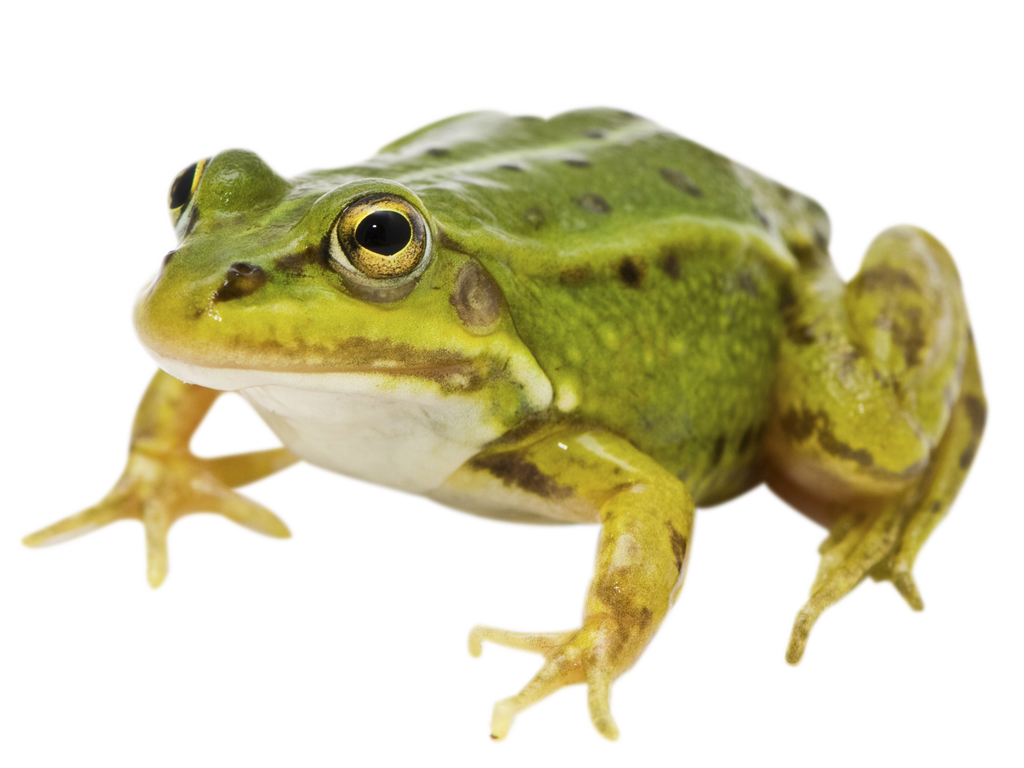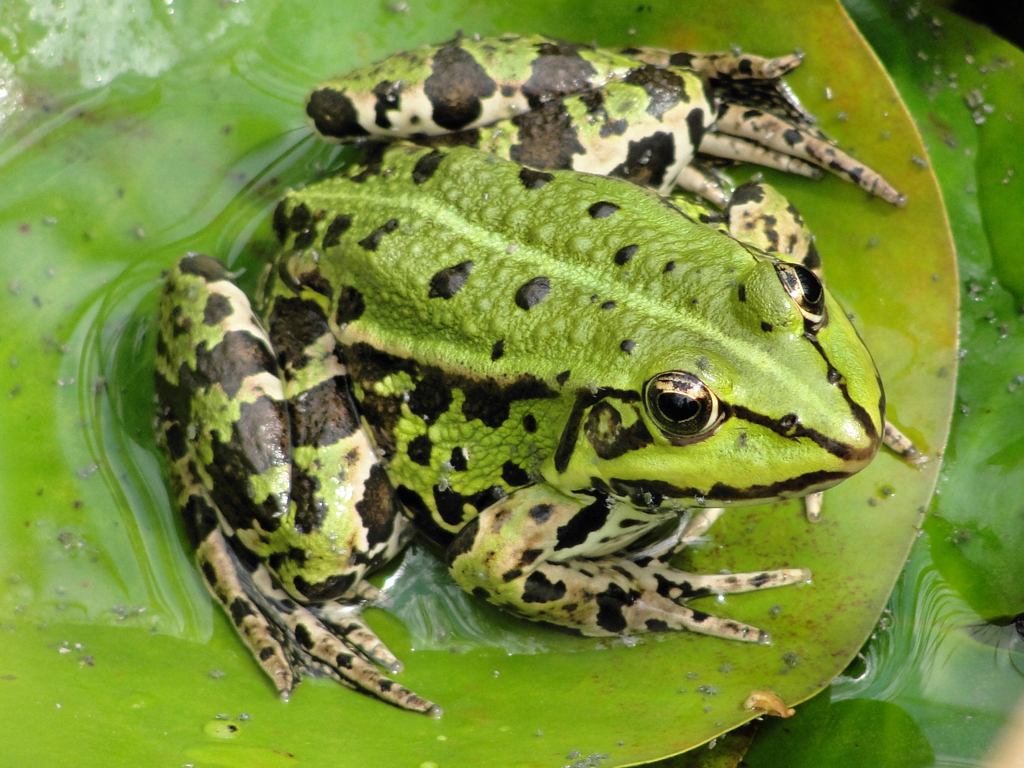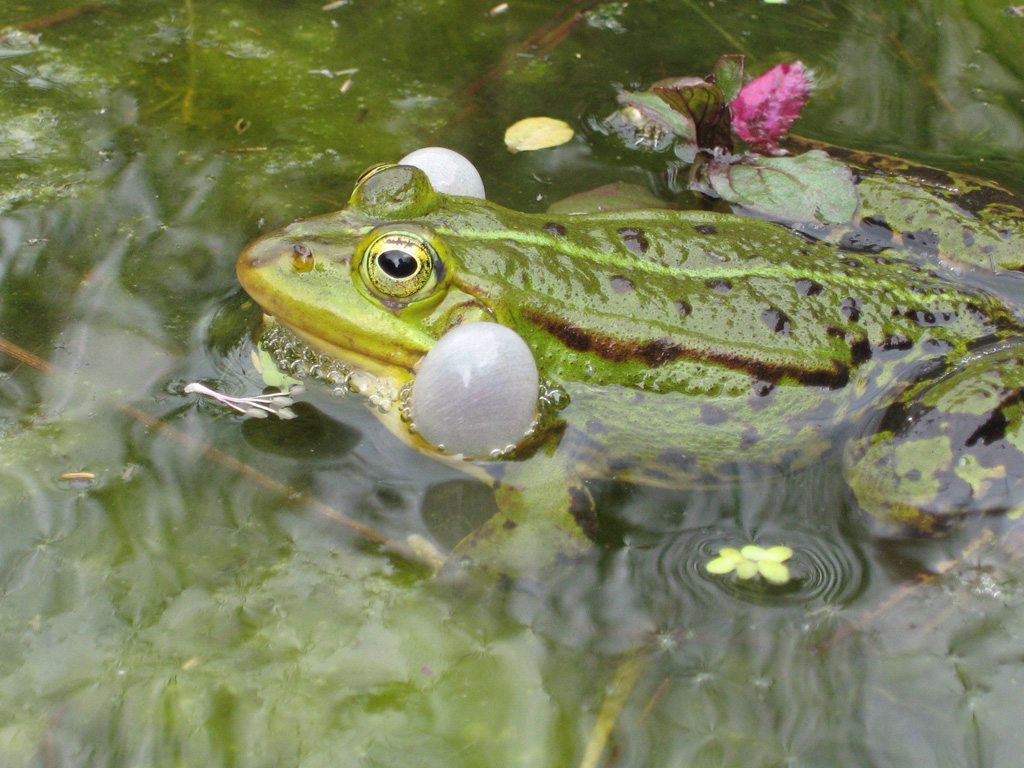Edible Frog
Pelophylax esculentus

Seldom eaten
The edible frog is so named because it used to be a popular dish in France. But it is not only the edible frog that is edible; many close relatives to it have been commonly served as “frog legs” for a long time.
Nowadays, collecting or hunting frogs is forbidden or strictly regulated across the European Union. Those countries that still serve frog legs instead import a species known as the bullfrog from breeders in Indonesia and other parts of Asia.

Photo: Gertrud-K.-CC-BY-NC-SA
Hybrid of two different species
The edible frog is not actually a true frog species. It is a fertile hybrid of the pool frog and the marsh frog, which has spread across Europe, establishing its own habitats. Fertile means that if an edible frog mates with another edible frog, they can produce tadpoles. The edible frog is the largest amphibian in Sweden, and it inhabits parts of south Sweden.
All amphibians in Sweden are protected, including the edible frog. But when the edible frog migrates to new areas, it is not always good. Because the frog is so big and eats other frogs, there is a risk that it will outcompete other frog species in the places it migrates to.

Photo: Sebaho-CC-BY-SA
Its call can be heard outside the museum
In the moat outside Malmö Museer, there are lots of edible frogs. You can hear their calls in May and June. The sound is created in two vocal sacs next to the corners of the mouth, which the males inflate. The females are attracted to the male whom they think has the best call. After mating, the female lays a cluster of jelly-like eggs on some aquatic plant. The tadpoles are larger than those of most other species, almost a centimeter in length. Adult frogs are voracious, and very good swimmers.
Distribution in Sweden

Mainly south-west Skåne. A few isolated areas up to Uppsala.
White marking = Distribution
Threat based on the Red List

Trade regulations
CITES: Not listed.